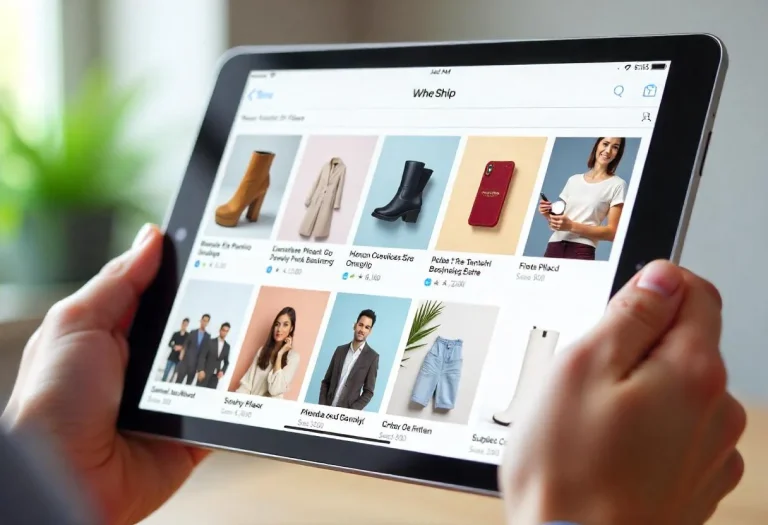
If you’ve been following the newest tech trends, you’ve probably come across the concept of augmented reality (AR) – a promising innovation shaking up industries. This technology bridges both physical and digital worlds, enhancing user experiences by overlaying computer-generated content in the real world.
Mobile app development is among the areas enjoying the benefits of AR. Take Pokémon GO, for instance. Launched in 2016, this mobile game showcased the power of AR, letting players engage with virtual creatures in the real world. It was a massive hit, drawing millions of users worldwide.
However, the integration of AR isn’t limited to just gaming. In fact, there are several ways this technology can be utilized in various sectors. Let’s find out more about the impact of AR below.
The Significant Impact of AR on Mobile App Development Across Sectors
As mentioned previously, AR is not limited to just gaming. Here’s why:
Retail
The world of retail benefits from AR technology by allowing customers to visualize products in their surroundings. This is good news, especially for indecisive shoppers. It’s as close as you can get to seeing an actual product without visiting a physical store.
It’s a win-win situation for both customers and sellers. Customers are more likely to be satisfied with their purchase given the more comprehensive product assessment – this leads to lower chances of returns, which can be quite taxing for retailers.
Healthcare
The healthcare sector is another industry that benefits from this technology. Telemedicine apps, for instance, can use AR to enhance remote consultations by providing real-time visualization of patient symptoms, all while ensuring data security by adhering to compliance standards and frameworks.
Medical students can also use their mobile phones to study internal organs. All they have to do is point their camera toward a human model or even a real-life human being!
Some other applications in healthcare include a mother using a mobile device to see virtual overlays and instructions when breastfeeding her child or a surgeon having real-time access to patient data in the middle of performing surgeries.
Education
Students have the ability to learn more and retain information with the help of immersive experiences, and this is what AR provides. They can use augmented reality to access augmented content, bringing textbooks to life.
Many schools are pivoting toward a more tech-oriented future as this is an accessible learning option, allowing students to access their learning materials anytime, anywhere. Additionally, 73% of teens have access to a smartphone, so in most cases, additional equipment is not required.
AR-integrated mobile apps can be developed for almost every subject. In chemistry, for example, students can use AR to easily visualize a molecule and understand its special characteristics.
Students learning mathematics can also see formulas and figures that can help in calculations. Perhaps other teachers would also like to make their history classes more immersive by using apps that create an environment showcasing a particular historical period. When it comes to integrating AR into the 4 walls of the classroom, the possibilities are endless!
Spatial Audio Integration
The integration of spatial audio in AR-enabled mobile apps enriches the auditory experience for mobile users. In navigation apps, for instance, users can receive three-dimensional audio cues based on their real-world surroundings, making mobile interactions a whole lot more interesting.
Alternatively, you can imagine exploring the wilderness through an AR-enabled nature guide app. As you move through different areas, spatial audio can immerse you in the sounds of birds chirping, water flowing, or leaves rustling – creating an enjoyable exploration experience.
Accessibility of AR Development Tools
Given its impact, AR will undoubtedly revolutionize several sectors. An additional advantage that comes with its influence is the accessibility of AR development tools. Let’s run through some of the popular AR development tools for mobile apps:
ARKit and ARCore
These frameworks provide mobile developers with user-friendly tools and libraries, enabling them to create AR experiences without requiring extensive coding knowledge. This accessibility has resulted in a surge of AR applications, ranging from interactive marketing campaigns to educational tools.
Unity3D and Unreal Engine
These platforms allow developers to build cross-platform AR applications for various devices. Whether it’s creating AR games that can be played on both iOS and Android or developing AR simulations for training purposes, these tools contribute to the democratization of AR development.
Final Thoughts
That being said, user experiences have completely changed due to the integration of augmented reality in mobile applications. Many sectors will reap its benefits – from
retail to education. We’ll see developments in our shopping experiences and even receive better patient care – all because of augmented reality.
One thing is certain – this is just the beginning. Mobile apps incorporating augmented reality are set to transform how we see and engage with digital elements in our daily routines, and by the looks of it, this transformation is here to stay.



